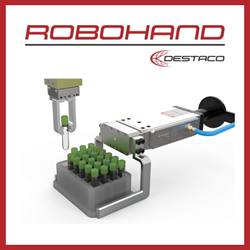Solve Loading Dock Challenges With Robotic Unloading
This Honeywell Intelligrated white paper examines the specific labor, operational and technological challenges on the loading docks of distribution centers (DCs), and introduces a new solution to help deliver the performance modern supply chains require.
Impact of Automated Transportation in Modernising Logistics
Automated transportation is not just limited to providing practical solutions for logistical problems, but it also ensures that its solutions enable enterprises to pinpoint and address their logistical inefficiencies in real-time.
Greater Demand for Automation and Technological Advancements to Boost the Warehouse Robotics Market
The warehouse robotics market is growing owing to the increased demand for automation, high competition in the e-commerce industry, and the advancement in technology.
How Can Robotic Automation Help Alleviate Labor Shortages?
In the past evaluating automation was typically about the Return On Investment (ROI), but more and more companies are considering automation because they are not able to staff their current manual operations.
Robotic Solutions in the Supply Chain
Following a number of successful implementations, were starting to see robots and their human counterparts work side by side in warehouses, deliveries and at sorting centers. Logistics plays a fundamental role in the success of the manufacturing process and by using robots, we are able to evolve business models to increase productivity - and profitability.
Interview with Bruce Welty, co-founder of Locus Robotics
My view is that companies (1) start with a problem that is suited to be solved by a robotic solution, then (2) design and build a robot that solves that problem and finally (3) build a business model that makes the robot the best economic solution to the problem.
Amazon's Robot War Is Spreading
Patrick Clark and Kim Bhasin for Bloomberg Technology: It was Amazon that drove Americas warehouse operators into the robot business.
Quiet Logistics, which ships apparel out of its Devens, Mass., warehouse, had been using robots made by a company called Kiva Systems. When Amazon bought Kiva in 2012, Quiet hired scientists.
The Exploding Use of Robotics in Logistics and Manufacturing
The future of robotics contains the same level of certainty as the suns rising in the morning. Robots are becoming an integrated portion of the workforce, and they will be there every day thereafter, unless a company ditches robotics altogether.
Fetch Robotics' Fetch & Freight
From Fetch Robotics (the core team from Unbounded Robotics/all former employees of Willow Garage):
The Fetch Robotics’ system is comprised of a mobile base (called Freight) and an advanced mobile manipulator (called Fetch). Fetch and Freight can also use a charging dock for autonomous continuous operations; allowing the robots to charge when needed and then continue on with their tasks. In addition, the system includes accompanying software to support the robots and integrate with the warehouse environment. Both robots are built upon the open source robot operating system, ROS.
Fetch is an advanced mobile manipulator, including features such as:
Telescoping spine with variable height from 1.09 to 1.491 meters
Capacity to lift approximately 6 kgs.
3D RGB Depth Sensor
Back-Drivable 7DOF Arm
Modular Gripper Interface
Head Expansion Mount Points
Pan-Tilt Head
Differential Drive
ROS-Enabled
Freight is a modular base, used separately or in conjunction with Fetch. Features include:
Base Expansion Mount Points
Payload support of approximately 68 kgs.
2D Laser Scanner
Stereo Speaker
Computer Access Panel
Run-Stop
ROS-Enabled
(full press release)
Fetch Robotics Unveils Robotics System for Logistics Industry
More and more, when consumers or businesses place an order they want those items delivered immediately. Between services such as Amazon Prime, Google Express, eBay Now, and the continuing growth of e-commerce, there is a consumer expectation of speed and efficiency that is putting significant pressure on the role of logistics and e-commerce warehouses. To address this challenge, Fetch Robotics today introduced a robotics system designed for the logistics industry.
Records 76 to 85 of 85
Featured Product

DESTACO - Revolutionizing Industrial Automation
Looking for a reliable solution to enhance your automation process? Look no further than the DESTACO Robohand Grippers. These grippers are designed for the modern world of robotics, offering unparalleled performance and precision. Whether you need to grip fragile items, irregularly shaped objects, or heavy-duty components, the DESTACO Robohand Grippers have got you covered. Their modular design allows for quick and easy customization, ensuring a perfect fit for your application.
Robotics and Automation - Featured Company

Electrocraft Inc.
ElectroCraft, Inc. is a global provider of dependable, application-engineered fractional-horsepower motor and motion products. Our products are found in thousands of different applications within industrial, commercial, and consumer product markets. While ElectroCraft provides a wide array of standard products with many configurable options, we have built our brand on custom OEM solutions that meet the precise performance, cost and quality our customers require.
